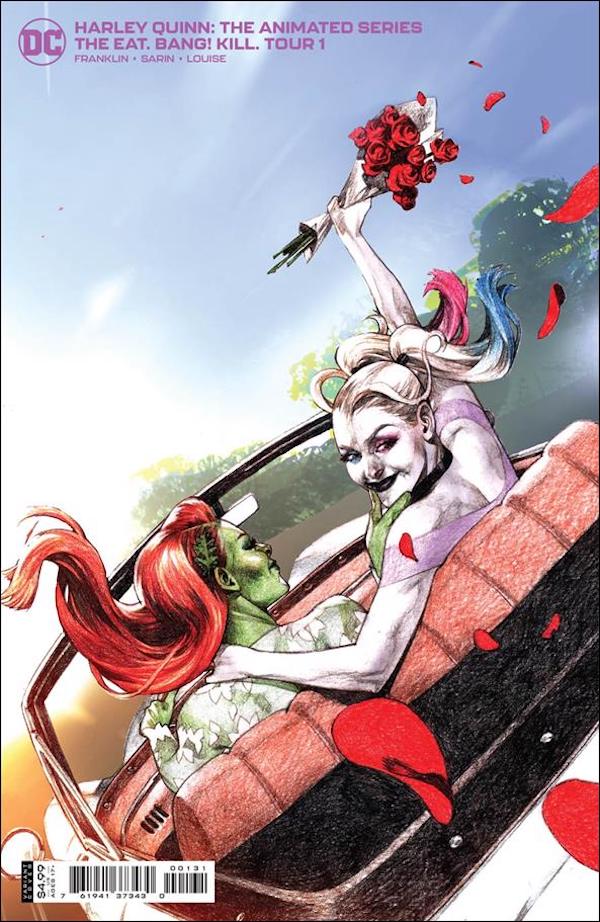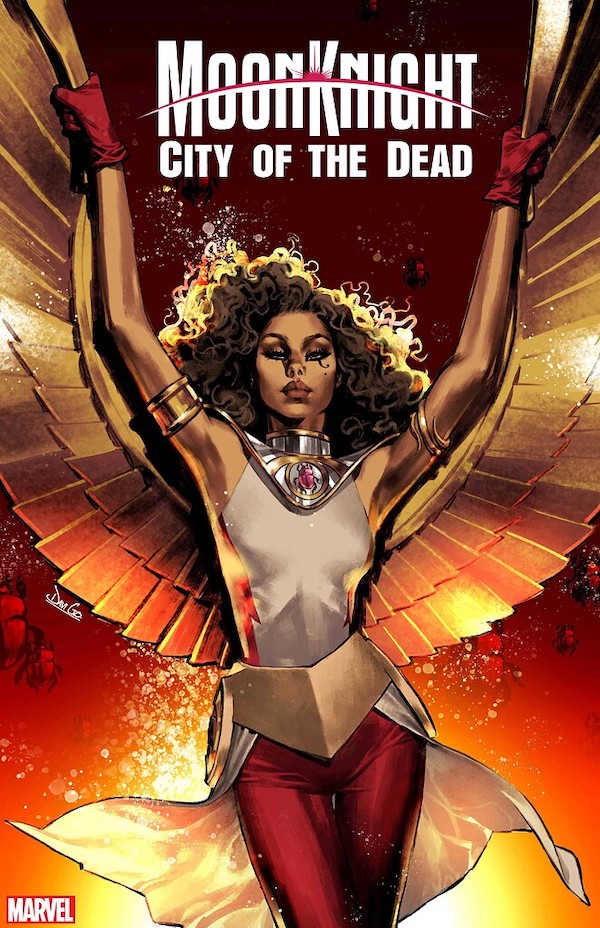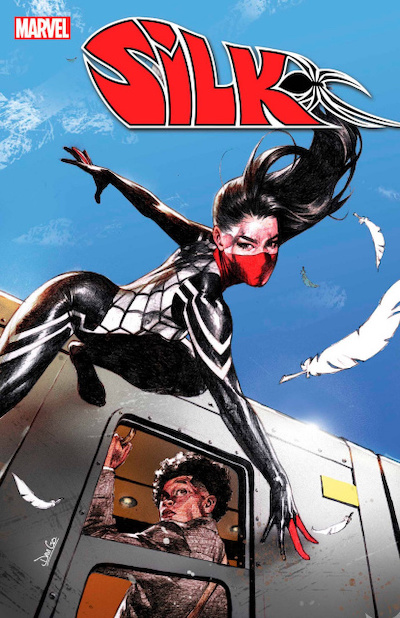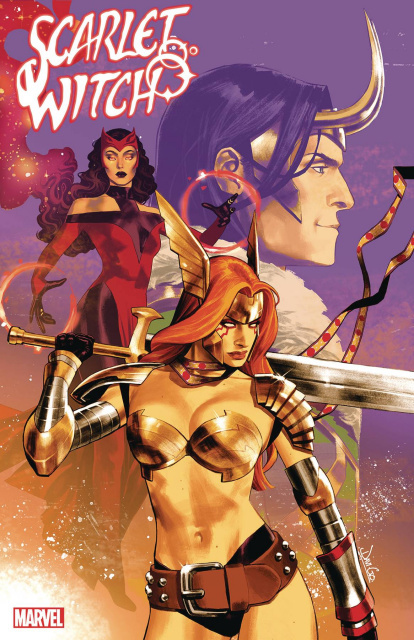“Between the Panels” is a monthly interview series focusing on comic book creators of all experience levels, seeking to examine not just what each individual creates, but how they go about creating it.
Every artist’s work is colored to some degree by their background and cultural influences. Take Davi Go for example — self-taught and exposed to a rich tapestry of creative material early on, his ultimate decision to pursue visual art over other potential career dreams was the comic world’s gain.
First off the basics…
Your specialties (artist/writer/letterer/inker/etc.): Artist
Your home base: Montego Bay, Jamaica
Social Media
Instagram: @constant.risk.of.fire
Twitter: @Seedavigo
YouTube: @WatchDaviGo
Tiktok: @WatchDaviGo
Fanbase Press Contributor Kevin Sharp: What is it about the comics medium specifically that attracts you as a creative person?
Davi Go: I’ve always loved telling stories. I wanted to make movies originally, but comics were more accessible as a child bursting with ideas.
KS: Please tell readers a bit about where you grew up and which kinds of creative things you enjoyed consuming as a kid — movies, TV, games, etc.
DG: Growing up in Montego Bay meant that I was always surrounded by vibrant, creative personalities. Not just artists, but just about every Jamaican has a certain flair to the way they do and say things that has always been inspiring to me. I’ve always loved movies, of course – sci-fi, psychological, existential, action-y stuff mainly. I’m passionate about music and I read every now and then, too.

KS: Do you recall when comics first came into your life?
DG: I think my first comics might have been newspaper strips. Titles like Modesty Blaise, Non Sequitur, Flash Gordon, and many more I wish I could remember.
KS: Around what age were you able to track down traditional comic books?
DG: There were always comic books around growing up, but I thought they were silly. It took some convincing from my friends in high school for me to really start reading comic books. I used to physically make my own in primary school, though – gluing or stapling together printing paper and folding them into little books. I made stories inspired by my favorite movies at the time, dreaming one day I’d be making my own.
KS: Who were your first favorite artists, once you were able to distinguish between different art styles and could recognize different people’s work?
DG: Enki Bilal was an early fave, and still remains so. I always loved the kind of art style I’d tend to find in fairytale books, but I never learned those artists’ names. I also had an MC Escher phase.

KS: Where would you have been exposed to Bilal? Were there certain favorite works of his for you?
DG: I think I came across one of his movies on TV when I was younger. Or maybe I found him online somewhere. I don’t think I have a favorite of his works, but I particularly enjoyed the way he would depict cold environments and the color blue.
KS: Can you recall any specific art piece you saw in your younger years that had a real impact on you?
DG: The art and stories in The Young Children’s Encyclopedia from Britannica really stayed with me. I still have one of those books today. There’s this one under the letter ‘F’, where they talk about what the future might be like. It has this gorgeous painted artwork from like the ’70s with flying cars, domed cities, and robots.
KS: What about your artistic life growing up? What kinds of things did you enjoy creating?
DG: In addition to the makeshift comics, I made paper dolls once or twice, but I spent a lot of time with clay. I remember being an equally good sculptor, actually. I tried painting at various points throughout my life, but I was never very good.
KS: Do you remember the first time you ever got paid for a piece of work?
DG: Probably doing portraits for a family friend who would give them to her friends as gifts when I was about halfway through my teens.

KS: Please talk about your learning process as an artist. What was the path like getting from a kid who liked drawing as a hobby to someone who could make a living doing it?
DG: I started drawing before I even learned to write and I just never stopped. In fact, I couldn’t stop. When I was growing up I’d draw on any paper I could find, in the backs and margins of every book, any chance I got; I was just constantly bursting with inspiration. I think that is why I made progress, because I was obsessed with drawing. Because I enjoyed it so much, it never felt like practice and I organically improved. Outside of the basics they teach you in primary and high school, most of what I learned was through observation of real life or other artists, and experimentation.
KS: You mentioned originally wanting to make movies. Do you remember when you first thought about becoming a professional creative person of any sort?
DG: I don’t know that I really ever made a decision about being a creative professional. I dreamed of being an actor and a pop star at one point, too, but all of these dreams, I think I assumed they’d just be dreams… until one of them wasn’t.
KS: How did you ultimately narrow down all your different dreams to pursuing visual art?
DG: It came to a point a few years ago where art was making me enough money that I didn’t need a 9-5 anymore, so I quit my job and focused on art full time.
KS: Can you talk about the steps you took to put yourself and your work out there that led to your first pro comics gig?
DG: It would have been a smaller publisher or maybe an independent writer or something. But I was just super online and posting the kind of art I wanted to make for a living, and clients would reach out to me. To this day I’ve never applied for an art job, and I think that must be some kind of luck. I’m interested in developing that art job hunting skill though.
KS: You’ve done a fair number of comics covers in recent years. When you look at a rack of comics, what cover elements by other artists really catch your eye?
DG: One thing I look for in my own art and others when it comes to covers is long-distance readability. How eye-catching and/or distinguishable a cover is from a distance, in amongst other covers on a shelf. Many elements can play into this from composition to lighting to color, etc. “Does this cover pull me closer?”

KS: Thumbs up or thumbs down: listening to music or other background noise while you work? If thumbs up, what kinds of things would we hear on the Davi playlist?
DG: Thumbs down when I’m researching and sketching, thumbs up when I’m rendering. I organize my playlists by tempo right now. Slow, medium, and faster songs across many genres that I’ll choose from depending on my mood or the vibe of the piece I’m working on.
KS: Please give a shout-out to anyone who’s been helpful to you in your comics journey. Could be someone who gave you advice, made an introduction, passed your name along, anything like that…
DG: All my love to Kevin Wada, Olivier Coipel, Sozo Maika, and many more amazing, kind, talented human beings who have shown me support I’ll never forget throughout my career. My life would quite literally not be the same without them.
KS: How about one comic you feel represents this medium at its very best?
DG: Off the top of my head I’d have to say one of my new, all-time favorite books is The Nice House on the Lake. Incredible sci-fi, dystopian mystery by Alvaro Martinez Bueno and James Tynion IV. The follow-up, The Nice House by the Sea, is about to be out and I cannot wait to read!
KS: Finally, please let readers know what you’re working on these days and what to be on the lookout for.
DG: I’m on a little “break” right now! I’m finishing up some long overdue commissions, then doing a big reset. I want to focus on a handful of personal projects that I can’t talk about just yet.

